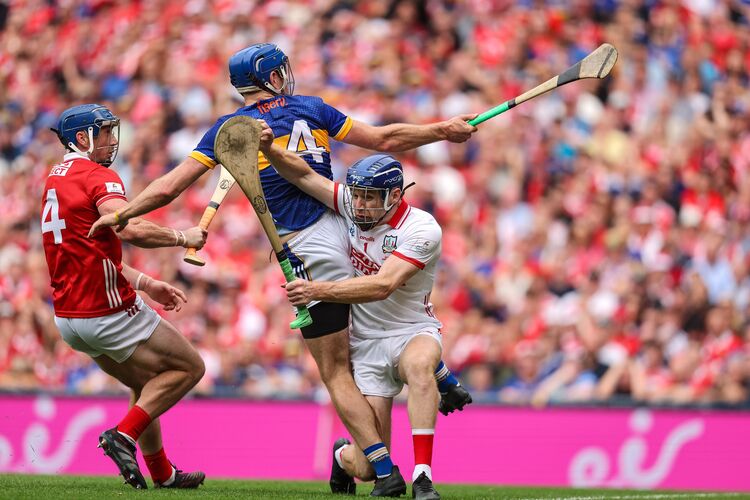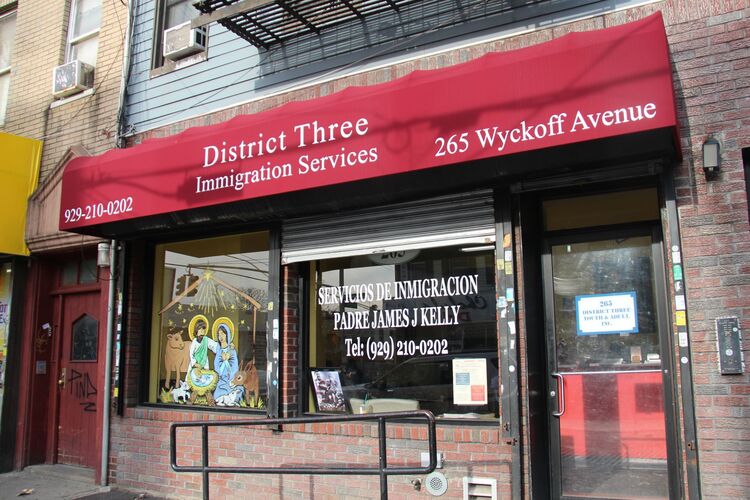A construction worker and businessman attack a young man at the periphery of the Hard Hat Riot, on May 8, 1970. Neal Boenzi/The New York Times/Redux.
By Peter McDermott
“The police commissioner ought to resign — or be made to resign!”
A statement along those lines was expressed recently by one of the declared candidates for the 2021 mayoral election in New York.
However, the quote itself, dating back 50 years, is attributed in David Paul Kuhn’s excellent and always fascinating “The Hardhat Riot” to the “brash and bald 40-something” congressman for the 17th district.
It had been a tense week leading up to the event on Friday, May 8, 1970, referred to in the title, with skirmishes between anti-war activists and workers in various parts of Manhattan. The backdrop was the revelation that the Nixon administration had ordered the invasion of Cambodia, which sparked widespread campus unrest nationwide. A protest at Kent State University turned bloody on Monday, May 4, with four students being shot and killed by the Ohio National Guard. Another nine were wounded.
Then on the fateful Friday that Mayor John Lindsay ordered flags to be flown at half-mast as a mark of respect for the dead students, construction workers beat up anti-war protesters on Wall Street in a series of attacks that would extend to Pace University and City Hall.
After his death this year we were reminded that Congressman John Lewis was knocked unconscious twice early in adulthood — the first time was in May 1961, at the Greyhound bus terminal in Montgomery, Ala., and the second on the Edmund Pettus Bridge in March 1965.
Well, several young people were knocked unconscious on May 8, 1970, and scores were injured. A first-aid station was set up inside Trinity Church on Broadway, where a reporter noted victims crammed in aisles with “broken teeth, broken noses, and bloodied heads,” sitting, waiting, “stunned, crying and cursing.”
Ed Koch, who himself would become mayor almost a full eight years later, was the congressman appalled at the reports that police officers largely stood by as the attackers beat anyone who got in their way.
Thankfully, the NYPD carried out a thorough investigation, even if their official findings ultimately amounted to a whitewash — for Kuhn has mined the more than 300 interviews conducted by officers in subsequent weeks. Among the other important sources consulted are affidavits from lawyers who witnessed some of the events of the day.

Construction workers march carrying flags on May 8, 1970. At the margins, bystanders and businessmen join the workmen. At the outset of the Hardhat Riot, 800 office workers stepped off the sidewalk and boosted the hardhats’ ranks.
It’s interesting in this regard to know that three years before “Mean Streets,” Martin Scorsese led an NYU film unit that made a documentary about events that week, but a lot of it focused on May 7. Very little in the way photographic evidence of what took place on May 8 survived, partly because the hardhats had attacked and scattered most of those holding camera equipment.
With his Robert Caro-like industriousness and enthusiasm for research, though, Kuhn has produced a very impressive reconstruction of what happened. At times, as with the work of Lyndon Johnson’s famed biographer, the result is better than any filmed record.
The lack of visual imagery meant the ferocity and often unrestrained brutality of the Hardhat Riot dimmed over time and indeed became largely forgotten. When Peter Brennan, the construction workers’ leader and secretary of labor in the second Nixon term, died in 1996, Congressman Peter King eulogized him in the New York Times report as a ''man of courage'' for ''standing up to the antiwar protesters who tried to take over our streets.’'
King said that “[m]ore than any other individual, he was responsible for bringing the blue-collar labor Democrats into the coalition that elected Presidents Nixon and Reagan. The concept of 'Reagan Democrats' would not have existed if not for Peter Brennan.’’
To be fair to the congressman, Kuhn has found no evidence that Brennan organized the Hardhat Riot and he could well have been recalling the big demonstrations that hardhat union leaders organized the same month, and the sometimes bipartisan patriotic rallies that followed that summer.
It was a time of mass demonstrations — although the less-well attended protests at which violence broke out, like the one at the 1968 Democratic National Convention in Chicago, get a disproportionate amount of attention. Two million participated in an anti-war moratorium in November 1969. Two and a half years earlier Dr. Martin Luther King was a keynote speaker at the mass demonstration in New York (some accounts claim 400,000, though the official figure is a fraction of that).

An injured young man during the Hardhat Riot. The small number of reporters present at the outset were quickly scattered, which led to nearly all of the assaults never being captured on film. Some photographers were also attacked and their film and cameras destroyed.
Historian Maurice Isserman, who was a 16-year-old when he attended that 1967 demonstration, recalled in a 50th anniversary piece for the New York Times, that he’d felt a “bit lonely in my growing conviction that the war represented a moral disaster and a stain on the national honor. But when I reached the Sheep Meadow, suddenly I found I was lonely no longer.”
He remembered there was a “good representation of older people (the latter, granted, a category that at the time seemed to me to include anyone much over 30). Some of them wore caps identifying them as members, as my father was, of trade unions, and a number of men my father’s age wore overseas caps identifying themselves, as he was, as veterans of World War II.”
Kuhn skillfully uses opinion polls of the time to tell us how people felt about the war (most people thought by 1969 it was a mistake, but trusted the president to find a way out) and about radical student demonstrators (a majority sympathized with the Ohio National Guard and two years earlier with Mayor Daley’s police in Chicago). Americans generally revered the flag at a time when some students thought the only way to get through to middle America that their country wasn’t all good was to desecrate it.
When reconstructing what happened that week in May, Kuhn uses a kind of immediate past tense. The book overall works best as a narrative history of the political scene of 50 years ago, with Mayor Lindsay (a liberal Republican who had been seriously considered by Nixon as a running mate in 1968) at its center, alongside White House aides, like Chuck Colson and Pat Buchanan, and others.
Readers might reasonably find issue with his treatment of class and the idea that there was a class war over the Vietnam war. The book subtitled “Nixon, New York City, and the Dawn of the White Working Class Revolution” begins with a quote from E.P. Thompson’s “The Making of the English Working Class.” But it was Thompson’s colleague, Eric Hobsbawm, if memory serves, who said that you are your grandparents’ class. Nowhere has this been more true as with the battle of ideas over the war. The old joke goes: what’s the difference between the International Ladies Garments Workers’ Union and the American Psychiatric Association? Answer: one generation.
The participants in this conflict arguably were part of the great American post-war middle class. The hardhats lived in neighborhoods beside cops and others in the middle-class civil service. They'd served in and had close ties to the military.
A key text of the era is Pete Hamill’s 1969 article for New York magazine about the white lower middle-class in Brooklyn. In his 1994 memoir “A Drinking Life,” Hamill described his own friendship group from the old neighborhood as a fellow writer, an illustrator and designer, a photographer and one who went back across the river to the “comfort” of the Transit Authority.
Lindsay, who switched parties ahead of the 1972 primary season, was from an old family (his mother's) and new money (his father’s). People from those two categories didn’t move left, but the mayor very much did, and so he became the original quintessential “limousine liberal.” Certain types of white-collar worker, like teachers, have tended in western countries to vote left-of-center. But when conservatives talked about “limousine liberals” they wanted you to think John Lindsay, when in fact they were mad at Jimmy Breslin, an extraordinarily hard-working journalist, who as it happened did have to be driven everywhere. Breslin, who appears in Kuhn’s account as the target of hecklers at Gaelic Park in 1969 (and elsewhere in the narrative), was as Dan Barry said in his 2017 Times obituary unafraid of “[going] after his own,” specifically Irish Americans who had forgotten their roots and the church that so often didn’t act justly.
An important footnote here is that one of the four Kent State fatalities (one of the three Jews who died), Jeffrey Miller, 20, was from Long Island. His father was a New York Times typesetter. Someone I consulted who knows the paper’s history described that job as “solid working class middle class.”
All of this is why covering the more personal accounts of the same events — like Joan Walsh’s “What’s the Matter with White People?” (2012) and Samuel G. Freedman’s “The Inheritance: How Three Families Moved from Roosevelt to Reagan and Beyond” (1996) — are more satisfying in some respects.

The politics of the Democratic Party, the “New Left,” the “white working-class” etc., are all sketched well, but as always with such things, critics can point to a more complicated picture.
Kuhn describes a clash between the literary critic Irving Howe (born in 1920) and a version of his younger self on a West Coast campus, an ultra-leftist who didn’t think the older man was true to the revolution. “You know what you’re going to be?" Howe said to him. "You’re going to be a dentist!” Michael Harrington (born in 1928), an advisor in the Johnson White House on poverty, is cited saying that the social critics of the time didn’t have direct experience of poverty, in the way their equivalents did in the 1930s. Not mentioned is that fact that these non-New Leftists, Howe and Harrington, are considered the two most important founders of the Democratic Socialists of America in the 1980s, a group whose most famous member these days is Rep. Alexandria Ocasio-Cortez.
As the wise founders aren’t around, the present-day members of the DSA might do well to read Kuhn’s book for cautionary tales; the complications can go the other way, too. They will see that George McGovern and Lindsay were seen as too close to the “movement,” which deluded itself into believing it to be the silent majority. But they might also learn that it’s not good politics to underestimate ordinary people’s identification with established institutions, whether it’s the flag or anything else.
At the same time, Kuhn also tends to downplay the moral idealism of many of the 1960s students.
Norman Mailer wrote in “Armies of the Night,” (1968): “By handing in draft cards, these young men were committing their future either to prison, emigration, frustration, or at best, years where everything must be unknown, and that spoke of a readiness to take moral leaps which the acrobat must know when he flies off into space …”
My colleague Paul Kleyman, who has long been prominent as a journalist and writer in the field of aging, begins his account of the 1960s with that Mailer quote.
“From 1964 to 1973, the United States sent 2.7 million young Americans to Vietnam. But I would not be one of them,” he wrote recently (read his essay here). Kleyman's inspiration was a grandfather who’d resisted the draft in Czarist Russia, fearing anti-Semitism, but he also wanted to be true to his grandparents’ notion of what America was.
Another caught up in the times was Joseph Mulligan, a New York-born, Detroit-raised medical student, who joined the Jesuits as a novice in 1963 at age 20. When I met him in Nicaragua 10 years ago, Fr. Mulligan told me (see here) about a raid on a draft office that landed him in court.
Kleyman had been seeking conscientious objector status but instead decided to become an active member of the non-violent resistance. He wrote: “An estimated half-million to a million men either resisted the draft openly or evaded it. Another 175,000 served as conscientious objectors. The government eventually accused 210,000 of draft evasion, indicting only about 25,000 and convicting 8,750. I was one of those 8,750.”
Half of the latter were sent to prison. Kleyman was one of the other half: he got a five sentence, which was suspended, with three years probation.
Mulligan was sentenced to five years, with another five years probation. After serving two years in a Minnesota prison, he was released on parole in 1972.







